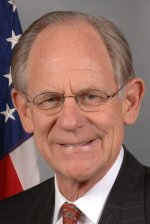
Despite our best efforts and billions of taxpayer dollars invested over the years, far too many youth in America move through our nation’s juvenile justice system only to be involved again in crime, drug and gang related activities, and never reach their full potential. As Congress looks to reauthorize the Juvenile Justice and Delinquency Prevention Act(JJDPA), reforms are needed that focus on breaking the cycle to prevent at-risk kids from ever getting involved in criminal activity, and keep them engaged in school, in meaningful after school programs, and involved in the community.
According to the U.S. Office of Juvenile Justice and Delinquency Prevention, police annually arrest approximately 2.2 million juveniles; 1.7 million cases are referred to juvenile courts; an estimated 400,000 young people cycle through juvenile detention centers; and about 100,000 youth are detained in juvenile jails, prisons, boot camps, and other residential facilities each night. The Annie E. Casey Foundation reports the cost of detaining a young person can be up to $65,000 per youth, per year.
We must work together to protect the safety and future of our children, families, and communities by updating our country’s juvenile justice system and providing effective supports and alternatives to at-risk youth. Not only will such change bring families and communities closer together, but it will make our streets safer and ultimately save counties and states millions in detainment-related costs.
We must work together to protect the safety and future of our children, families, and communities by updating our country’s juvenile justice system and providing effective supports and alternatives to at-risk youth.
As Congress considers updating JJDPA, we will explore ways to protect our children from the dangers of adult jails; improve the safety for youth in custody; and perhaps, most importantly, we focus on how to prevent youth from getting involved in the juvenile justice system all together.
Studies consistently show that the most effective way to reduce crime in the long-term is to invest in prevention-based strategies that reach at-risk youth before they ever become involved in criminal activity. For these reasons, I remain committed to working with my colleagues in Congress on evidence-based policies to prevent juvenile crime and violence by providing at-risk youth with access to safe alternatives.
At a recent Youth Violence Prevention Roundtable I held in my home state of Delaware, I learned from teachers, law enforcement, juvenile justice officials, community leaders, and academic leaders about what measures work to keep kids safe in our community, both inside and outside the classroom. These leaders agreed that early childhood programs, mentoring programs, afterschool activities, and community and family involvement are integral in helping prevent youth violence from taking place and helping at-risk youth succeed.
In Congress, we must target investment in programs that reach youth before they participate in criminal and violent activities. To this end, I have joined with my colleague Rep. Bobby Scott (D-VA) to introduce the Youth Prison Reduction through Opportunity Mentoring, Intervention, Support, and Education, or Youth PROMISE Act. If enacted, the Youth PROMISE Act would provide for evidence-based and promising practices related to juvenile delinquency and criminal street gang activity prevention and intervention.
Specifically,this legislation aims to provide communities with the much-needed resources and support needed to break the cycle of violence, specifically gang-related youth violence, and to provide at-risk youth access to a safe and educationally enriched environment.
Evidence has shown that the majority of juvenile delinquent acts committed occur between the time when the school day ends and parents return home from work. During this unsupervised time, youth become increasingly involved in crime-, drug- and gang-related activities. Once kids start down the path of gang participation, many will end up behind bars and continuing the cycle of violence.
Once kids start down the path of gang participation, many will end up behind bars and continuing the cycle of violence. Now, more than ever, we must break this cycle before it starts by focusing on prevention.
Now, more than ever, we must break this cycle before it starts by focusing on prevention. The Youth PROMISE Act supports these efforts by engaging youth in positive educational and enrichment activities, including afterschool programs, sports, and volunteering so they can be successful in the classroom and beyond.
Additionally, parent and community involvement is critical in creating a safety net for youth. Under the Youth PROMISE Act, communities facing the greatest youth gang and crime challenges would establish a Promise Coordinating Council (PCC). Each PCC would consist of law enforcement, court services, school, social service, health and mental health, and community-based representatives who would collaborate to develop a comprehensive plan for implementing evidence-based strategies targeted at youth at-risk or currently involved in gangs or other delinquent activities aimed at redirecting them towards productive alternatives.
By supporting evidence-based prevention and intervention strategies, including those which foster educational success and community involvement, we can work together to keep youth from falling victim to crime and violence. Our nation’s youth can no longer wait, and I am hopeful Congress will consider these important measures aimed at improving our country’s juvenile justice system this year.
Mike Castle represents the State of Delaware in the U.S. House of Representatives. He is the Ranking Member of the Subcommittee on Early Childhood, Elementary and Secondary Education. He also serves as a member of The Ripon Society’s Honorary Congressional Advisory Board.




